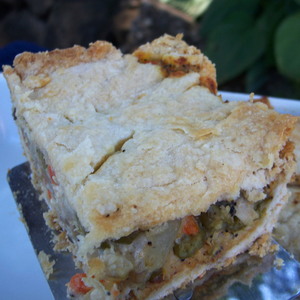Ingredients
Equipment
Method
- In a large mixing bowl, combine the flour and salt.
- Add the cold Crisco to the flour mixture. Using a pastry blender or two forks, cut the shortening into the flour until the mixture resembles coarse crumbs with some pea-sized pieces of Crisco remaining.
- In a separate small bowl, whisk together the cold egg, cold water, and white vinegar.
- Gradually add the wet ingredients to the dry ingredients, mixing gently with a fork until just combined and the dough barely comes together.
- Be careful not to overmix; the dough should still be a bit shaggy.
- Divide the dough into two equal portions (for a double-crust pie) or keep as one, then flatten each portion into a disk.
- Wrap each disk tightly in plastic wrap and refrigerate for at least 30 minutes, or up to 2 days, to allow the gluten to relax and the fat to firm.
- When ready to use, lightly flour a clean surface and roll out the chilled dough from the center outwards to your desired thickness for your pie pan.
- Carefully transfer the rolled-out crust to your pie pan, trim and crimp the edges as desired, then fill and bake according to your pie recipe's instructions.
Notes
Ensuring all your ingredients, especially the Crisco, water, and egg, are very cold is paramount for a tender, flaky crust. The cold fat creates steam pockets during baking, resulting in desirable flakiness. Overworking the dough is the nemesis of a good pie crust; mix until just combined to prevent gluten development, which can lead to a tough crust. The vinegar acts as a tenderizer and can also inhibit gluten formation, contributing to the "no-fail" aspect. Always chill the dough for at least 30 minutes before rolling to allow the gluten to relax and the fat to firm up, making it easier to handle and preventing shrinkage during baking.
